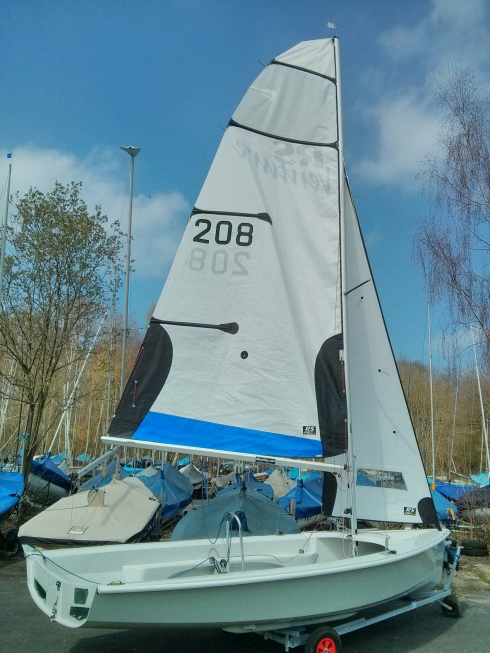RS Venture - Outboard Engine
The Venture is fitted with an outboard engine mounting on the starboard transom. This consists of a thick composite plate inboard and a stainless steel plate glued to the transom outboard. A short shaft outboard engine (petrol or electric) is very easily clamped to these plates.
(Note: the adhesive used to fasten the outboard steel plate ages quickly - mine fell off in the boat park and I found it lying on the ground. See Appendix for maintenance hints). Note that a short shaft outboard is required for the RS Venture.
RS Sailing recommend a maximum outboard motor of 3.5hp for use with the Venture. An outboard is particularly useful when the wind drops or when manoeuvring in a confined harbour or marina. It is worth noting that in some busy harbours entry/exit under sail is prohibited. In practice a 2.5hp engine is more than adequate for casual in-shore cruising. There is a huge variety of suitable outboards of this power range available. The main choice is between air or water cooled engines. Air cooled engines have the advantage of being marginally lighter and avoid the issues of circulating sea water within the engine. Water cooled engines however tend to be quieter with less vibration. There is a greater choice in both sizes and manufacturers of water cooled engines.
One further option is an electric motor (but not a 'trolling electric motor'). Electric motors are not significantly lighter than petrol options when the weight of the battery(ies)is included although cheap and quiet to run and very convenient to use in confined areas. However, without a spare battery, these may have a limited range ( the latest versions are directly comparable with petrol engines with a good range and power output but the cost is almost quadruple the cost of a basic petrol engine). Electric outboards often offer improved controls over petrol eg idling and reverse.
